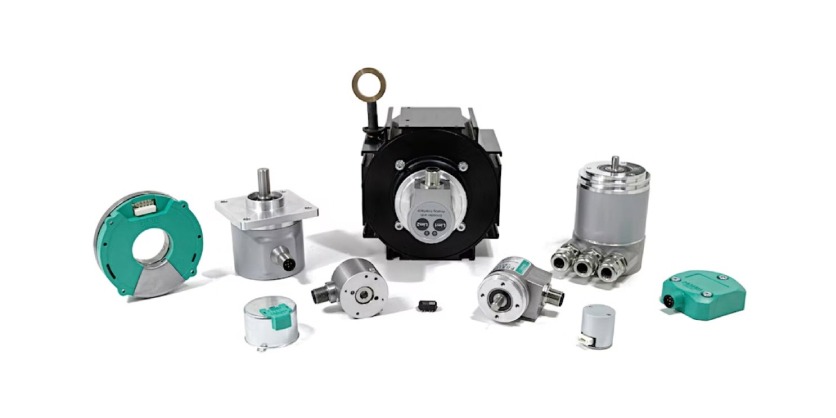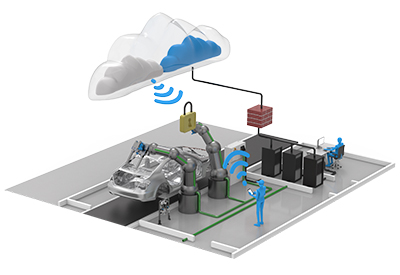A Guide to Encoder Types in Mechatronic Automation
January 25, 2024

A Guide to Encoder Types in Mechatronic Automation
Encoders are pivotal sensor components in mechatronic automation, converting mechanical motion into an electrical signal that can be interpreted for precise control and positioning of mechanical parts. This article explores various encoder types, focusing on their unique components, advantages, and applications.
Rotary Encoders
Rotary encoder types are essential in translating rotational motion into a quantifiable electronic signal. They come in two main types: absolute and incremental. The absolute rotary encoder provides a unique code for each shaft position, offering precise position tracking. Incremental rotary encoders, on the other hand, output pulses correlating to the amount of rotation, allowing for the calculation of position through pulse counting.
| Components: | Advantages: | Applications: |
| Code Disc: A disc with lines or slots, often made of glass or metal.Light Source and Sensor: Emitting and detecting light interrupted by the code disc.Electronics: To process signals and provide output. | High Precision: Offers accurate rotational measurement.Versatility: Used in a wide range of applications.Durability: Many models are designed for harsh environments. | Robotics: For joint positioning.CNC Machines: In controlling spindle rotation. |
Absolute Encoders
Absolute encoder types, whether linear or rotary, provide a unique positional value for each possible position. This means that even after a power interruption, the encoder can report the exact position without needing to find a reference point.
| Components: | Advantages: | Applications: |
| Unique Code Patterns: Each position has a distinct pattern.Complex Sensor Systems: For reading these unique patterns. | Memory: Retains position information even after power loss.Complex Applications: Ideal for applications needing precise tracking of position over time. | Robotics: For precise control of robotic arms.Telescopes: In astronomical instruments for accurate positioning. |
Incremental Encoders
Incremental encoder types generate signals in response to movement, but unlike absolute encoders, they do not keep track of the actual position. Instead, they output a series of pulses indicating movement, which can be counted to determine position relative to a known starting point.
| Components: | Advantages: | Applications: |
| Pulses: Generated per rotation or linear movement.Simple Sensors: To count these pulses. | Simplicity: Easier to implement and maintain.Cost-Effectiveness: Generally more affordable than absolute encoders. | Conveyor Belts: For tracking movement.Automotive: In speed sensing applications. |
Magnetic Encoders
Magnetic encoder types represent a unique category in the encoder family, distinguished by their use of magnetic fields to measure rotational or linear motion. They operate by detecting changes in magnetic fields created by a moving magnetic scale or disc. These encoders can be designed as either absolute or incremental, like optical types, but they leverage magnetic technology.
| Components: | Advantages: | Applications: |
| Magnetic Disk: With alternating poles.Magnetic Sensors: To detect field changes. | Resistance to Dirt and Water: Less susceptible to environmental factors.Robustness: Durable in tough conditions. | Heavy Machinery: In environments with dirt, dust, and moisture.Automotive Systems: For position sensing in harsh conditions. |
Linear Encoders
Linear encoder types directly measure linear movement and are vital in applications requiring high precision in linear displacement. Like rotary encoders, they come in absolute and incremental types. Absolute linear encoders provide distinct position values, ensuring accurate positioning even after a power loss. Incremental linear encoders emit pulses proportional to the movement, used for measuring speed, distance, and position.
| Components: | Advantages: | Applications: |
| Scale: A strip with encoded information.Reader Head: Detects the scale’s markings.Processing Electronics: For signal interpretation. | Accuracy: Provides precise linear positioning.Speed: Capable of high-speed operation.Resolution: Offers high-resolution measurements. | Precision Machining: In tools requiring exact positioning.Metrology: For accurate measurement in scientific instruments. |
Additional Considerations
- Environmental Factors: Assessing the operating environment is crucial. Dust, moisture, temperature, and electromagnetic interference can impact encoder performance.
- Interface Compatibility: Ensure that the encoder’s output is compatible with other system components like controllers and readout systems.
Future Trends
- Miniaturization: As technology advances, smaller encoder types with higher precision are becoming more prevalent.
- Wireless and IoT Integration: The integration of encoders with IoT and wireless technologies for remote monitoring and control is a growing trend.
- Advanced Materials: The use of new materials and manufacturing techniques to enhance durability and performance.
Selecting the Right Encoder
When selecting an encoder, consider the following:
- Resolution and Accuracy: Based on application needs.
- Physical Size and Mounting Options: Ensure it fits within your system.
- Cost vs. Performance: Balance between budget and required specifications.
Final Thoughts
Encoders play a critical role in the precision and efficiency of mechatronic systems. By understanding the different types, their components, advantages, and applications, engineers and buyers can optimize their automation systems for superior performance and reliability.
Related Story
Introduction to Motion Controllers from Electromate
In the realm of automation and robotics, the precision and accuracy of movement is paramount. The brain behind these meticulous movements is the motion controller, a device designed to control the sequence, velocity, position, and torque of a mechanical system.



